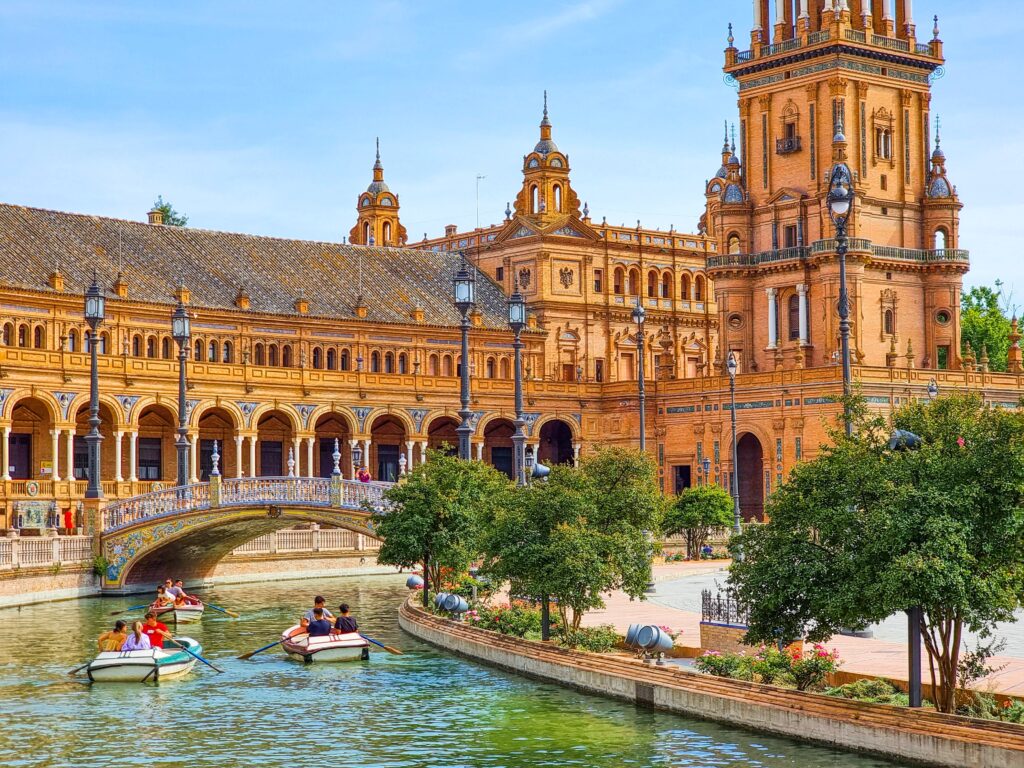Table of Contents
ToggleThe Best of Seville Spain in 1-3 days
Seville, located in the sunny region of Andalusia, Spain, is a city rich in culture and history with Moorish and Christian influences.
The city saw a transformation in its culture, economy, architecture, crafts, and religious tolerance.
The Moors (Arabs) conquered Seville from the early 8th until the 13th century. The city experienced significant transformation in its culture, economy, architecture, and religious tolerance.
You will find tilework, carved stucco, and well-manicured gardens throughout the city.
Flamenco is part of the cultural life in Seville. The dance originated in Andalusia with moves carried by the Arabs.
Tapas are said to be the best in Spain. Many local bars and restaurants offer free tapas, and small plates of Spanish delicacies, with each ordered drink.
Walking through the picturesque narrow streets, enjoying bar hopping and sampling tapas, or getting lost in the alleys of the Jewish quarter make Seville an extraordinary place.
Best time to visit: March to April and September to November. Hotel prices are lower; temperatures are mild. Easter is the Holy Week when religious parades take place throughout the city.
I visited in April; it was very comfortable.
Where to stay: Click here for information.
Helpful tips:
Using eSim card will give you coverage worldwide with one provider and one payment. Click here for info.
Where to eat: Restaurants with ratings and reviews. Click TripAdvisor.
Travel Insurance: Click here for information.
From the Airport:
- Seville Airport is 10 kilometers from the city, off the A-4 motorway.
- You can get on the EA line from the airport to the city center by bus. The trip takes about 35 minutes and costs 4 euros (6 euros return)
- . The journey takes about 30 minutes by taxi and has a fixed price of €24.98.
- By road, you must take the A-4 on a 25-minute trip.
Getting around on a bus:
Seville’s city buses usually run from 6 a.m. to 11.30 p.m.
There is a one or 3-day tourist card with unlimited travel—best times to visit:
March to May.
1 Day plan:
Basilica de la Macarena
Metropol Parasol
Casa de Pilatos
Barrio de Santa Cruz
Alcazar
Cathedral de Sevilla & Giralda Tower
2 Day plan: (add)
Muse de Bellas Artes de Sevilla
Iglesia Colegial del Salvador
Archivo de Indias
Real Plaza de Toros
Plaza de España
Parque Maria Luisa
Cathedral de Sevilla & Giralda Towe
All the sites are withing walking distances.
Seniors; you can find helpful information by clicking: Traveling Seniors.
3 DAYS VISIT
DAY 1
1. Basilica de la Macarena, also known as Basílica de Nuestra Señora de la Esperanza Macarena,
Houses the famous statue of the Virgin Mary known as “La Macarena.”
The facade has delicately carved figures representing the lives of Jesus and the Virgin Mary.
The center of the church is decorated with marble columns. It has beautiful glass-stained windows. The altars are well decorated.
The Mary statue was created from wood in the 17th century. The statue is so well done that it is life-like. It is dressed in embroidered garments and adorned with jewels.
Click here for tours and activities.
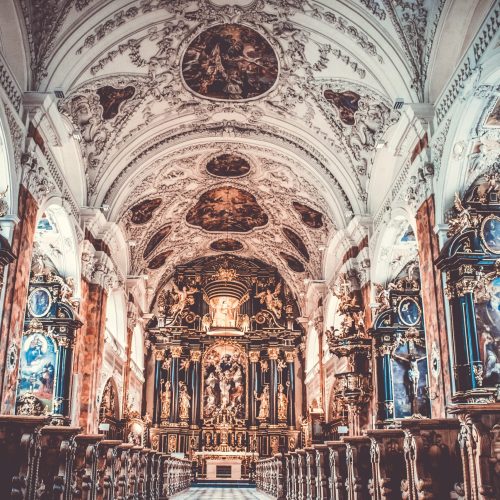
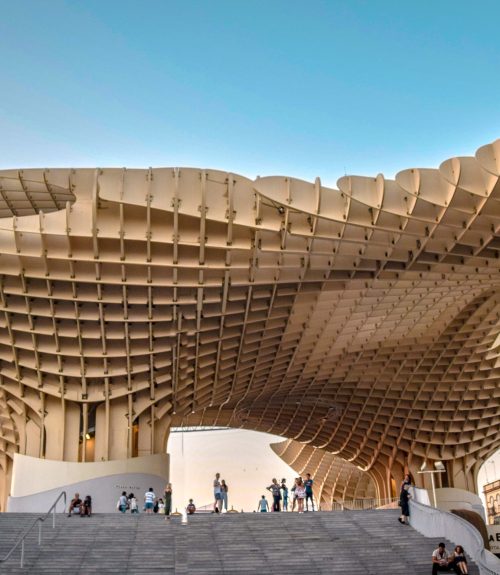
2. Metropol Parasol, also known as Las Setas de Sevilla or the Mushrooms of Seville
A modern designed structure built from Birch wood and designed by the German architect Jurgen Mayer. It is a futuristic design contrasting the medieval architecture of Seville.
There is a terrace on the rooftop; an elevator takes visitors to the top, where they can enjoy the Seville vistas. They can also enjoy the bar and restaurant on top, below a public square where events and activities take place.
Click here for tours and activities.

3. Casa de Pilatos, also known as the Pilate’s House
Was built in the 15th century by the Enríquez family, a Spanish noble family. It depicts beautiful Andalusian architecture. Rich in its design and decoration.
A legend claims the house was built on the spot where Pontius Pilate was born hence the name. Pilate presided over the trial of Jesus.
The magnificent courtyard is adorned by ornate arches and beautiful azulejo tilework representing scenes from the bible.
The interior was decorated with detailed plasterwork and handcrafted woodwork. The rooms bear witness to the extravagance of the owners with paintings, tapestries, and sculptures. Click here for tours and activities.
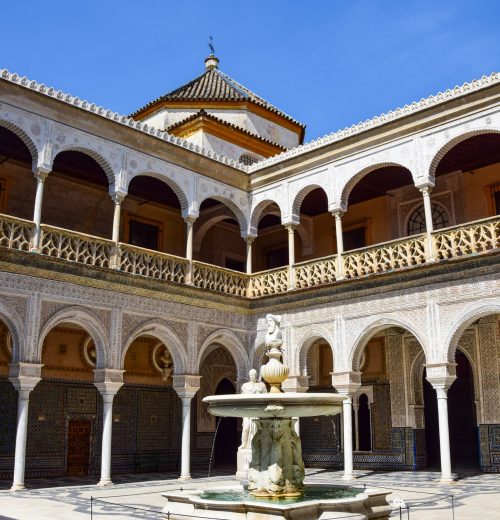
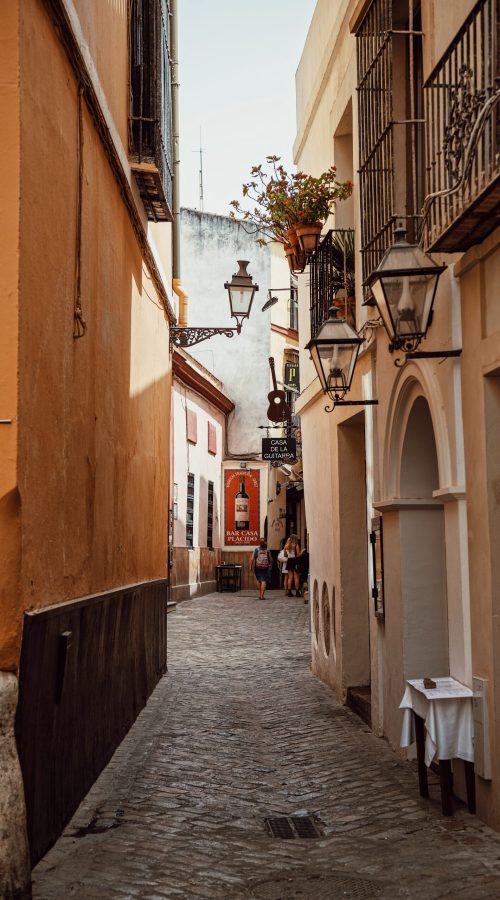
4. Barrio de Santa Cruz, also known as the Santa Cruz neighborhood,
Whitewashed houses, winding narrow streets, and a vibrant atmosphere that makes the area attractive to locals and visitors.
Its history goes back to the Arab medieval times. The Jewish quarter was busy with merchants, artisans, and scholars until the Catholic monarchs expelled the population during the Spanish Inquisition, and the area fell to neglect.
It was renewed in the 18th and 19th centuries to what we see today, as a vibrant and desired place.
The Moorish influence is throughout the neighborhood, which gives it a unique charm.
Gardens, plazas, and parks are in the area. Cafes, restaurants, and bars are where people gather to socialize. Click here for tours and activities.
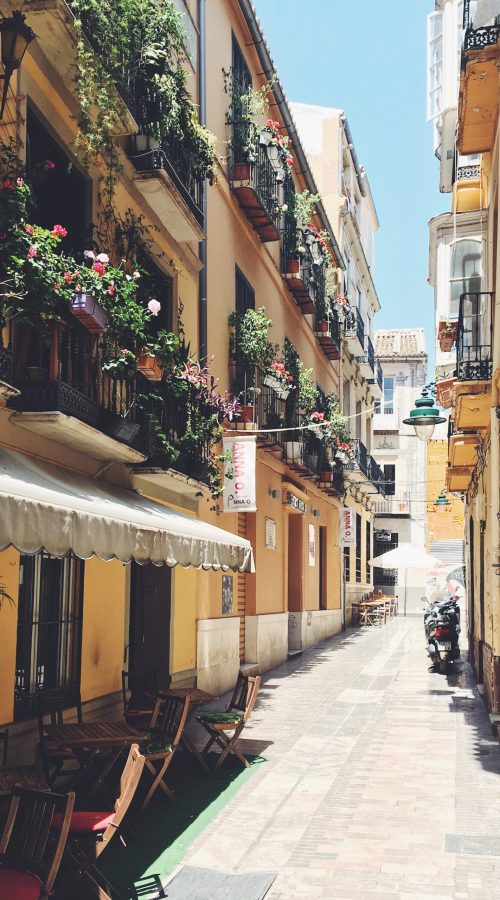
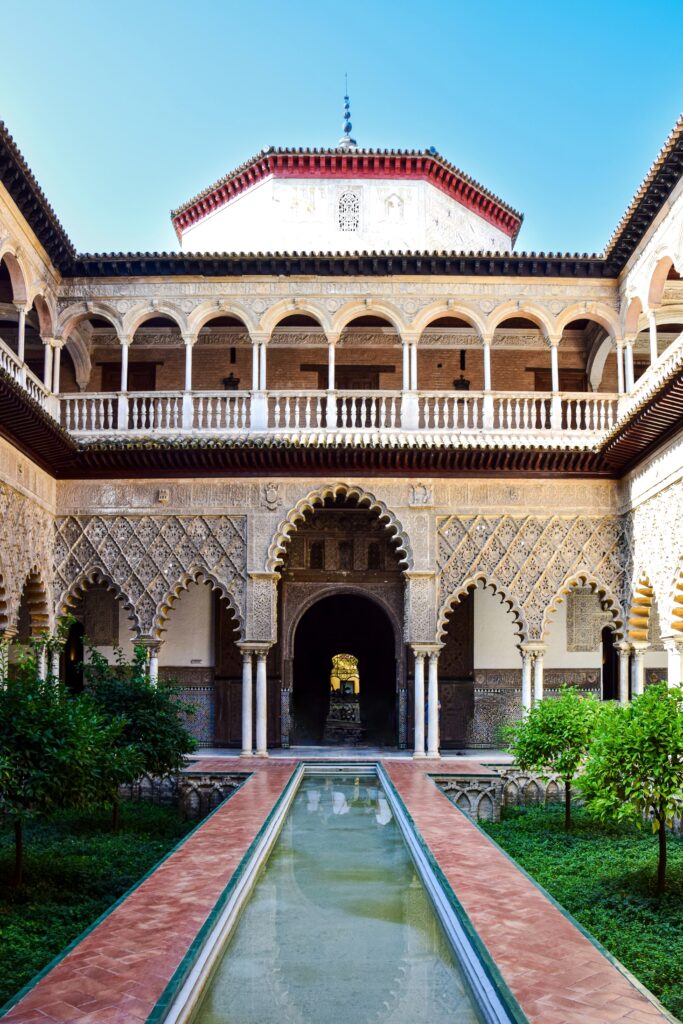
5. Alcázar of Seville
Alcazar was built by the Muslims in the 10th century as a fort and defensive structure. The renovations over the years present a mixture of Moorish, Gothic, Renaissance, and Mudejar architectural styles.
Like other structures in Seville, there are tilework and detailed decorations. The designs are called azulejos which is Andalusian art.
Gardens outside with fountains, pools, and geometrically planted and trimmed hedges provide a tranquil corner.
In the Alcazar sits the Palacio de Don Pedro or the Mudejar Palace. Mudejar comes from the Arabic word Muhajir which means immigrant. These Muslims stayed after the Arabs were defeated and pushed back to North Africa. They became known for their artistic architecture, evident in the Palacio.
Also in the Alcazar is The Sala de los Embajadores, or the Hall of Ambassadors, with very artistically crafted wooden ceilings. Click here for tours and activities.
6. The Cathedral of Seville and the Geralda Tower, also known as the Cathedral of Saint Mary of the See or Catedral de Sevilla in Spanish
One of the largest churches in the world was built in the 15th century on the former mosque site. The tower was a minaret that was converted into the Giralda Bell Tower. The lower two-thirds is Islamic design, and the upper third is Catholic.
It was built to allow a horse to climb the top on a ramp. Visitors can walk up to the top rather than climb stairs. Click here for tours and activities.
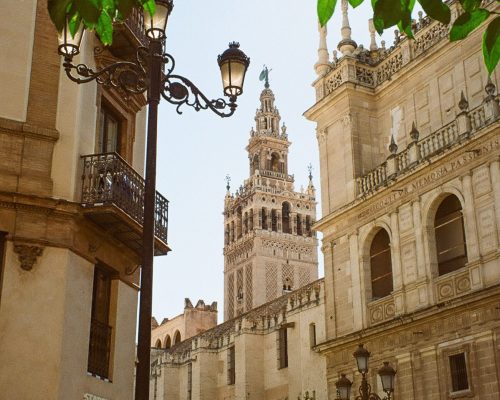
DAY 2
1. The Museum of Fine Arts of Seville, Also known as the Museo de Bellas Artes de Sevilla,
Houses artworks from the Middle Ages to the 20th century. The building is a convent that was converted into a museum. The courtyards are beautifully designed and cut.
It houses artwork from the Seville golden age. The”Immaculate Conception” by Murillo is the centerpiece. You will find a collection of sculptures, decorative arts, and prints. Click here for tours and activities.
2. The Iglesia Colegial del Salvador
Was built in the 17th century on the site of a former mosque. The construction took over a century. The different styles are evidence of various architects contributing to the project.
The facade is made of intricately carved stone. Scenes from the Bible and the lives of saints are depicted in the Ornate sculptures and reliefs. A large rose glass window over the entrance allows light in.
Beautifully carved altarpieces, gilded sculptures, and frescos representing the lives of Jesus and the saints adorn the interior.
The sacristy houses liturgical vestments, chalices, and other rare objects. Click here for tours and activities.
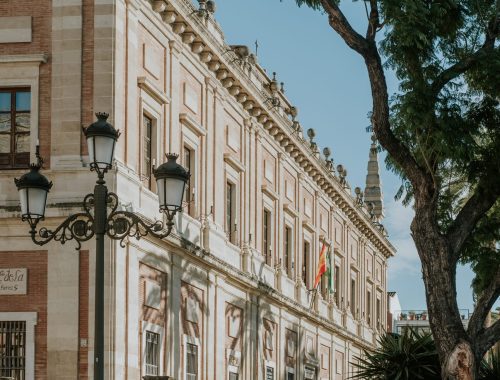
3. The Archivo de Indias,
Charles III of Spain 1785, saw the need to centralize and archive all documents generated by the overseas empire. The museum houses millions of records created over centuries. They give a great insight into how the Spanish managed the American colonies.
You will find letters written by Christopher Columbus that provide firsthand accounts of his experiences and perspectives of the new world. Click here for tours and activities.
4. Real Plaza de Toros, also known as La Maestranza
The Bullring, was built in 1761, making it one of Spain’s oldest and most famous.
The bullring is built of brick and sandstone, and its façade features a beautiful neoclassical style with ornate carvings and arches.
Bullfighting is a controversial and emotional issue. Some consider it an art form and celebration of bravery and animal cruelty by others.
Real Plaza de Toros also serves as a museum, showcasing the history and art of bullfighting. In addition, it houses a collection of bullfighting memorabilia, including costumes worn by famous bullfighters, paintings, and photographs that capture the essence of this centuries-old tradition.
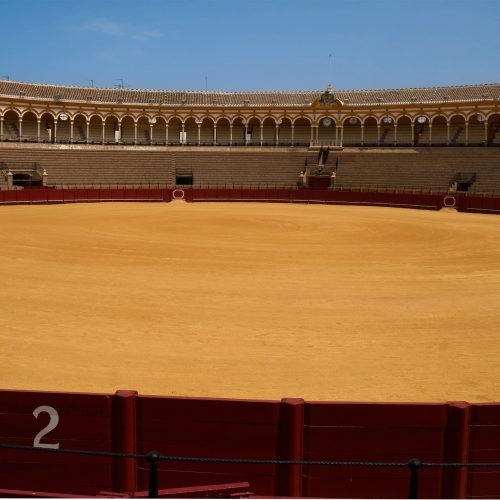
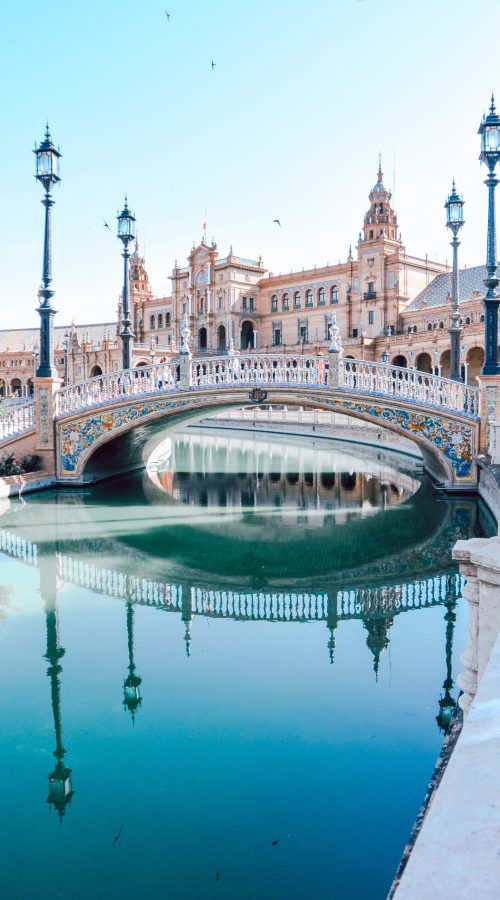
5. Plaza de España
A spectacular square designed by the Spanish architect Anibal Gonzalez. It was built in 1928 for the Ibero-American Exposition to showcase the ties between Spain and its former colonies.
One of the most striking features of Plaza de España is its semi-circular shape, which surrounds a large central square with a grand canal flowing through it. The plaza is adorned with beautiful brick and tilework, colorful ceramics, and intricate carvings, reflecting the traditional Andalusian and Mudéjar architectural styles. The use of azulejos, a form of glazed ceramic tiles, is exceptionally prominent, adding to the plaza’s stunning aesthetic.
The main building of Plaza de España is a two-story structure that wraps around the semi-circular square, featuring a long colonnade with 48 alcoves representing each province of Spain. These nooks are adorned with ornate ceramic benches, each depicting a unique scene from the history or culture of the corresponding province. The second floor of the building is accessible via a grand staircase and offers panoramic views of the plaza and the surrounding area.
The central square of Plaza de España is a vast open space with a grand canal that is spanned by four ornate bridges. Visitors can rent rowboats to navigate the canal and enjoy the views of the plaza and the buildings surrounding it. The plaza also has numerous fountains, flower beds, and walkways, providing a serene and picturesque setting for strolls or relaxation.
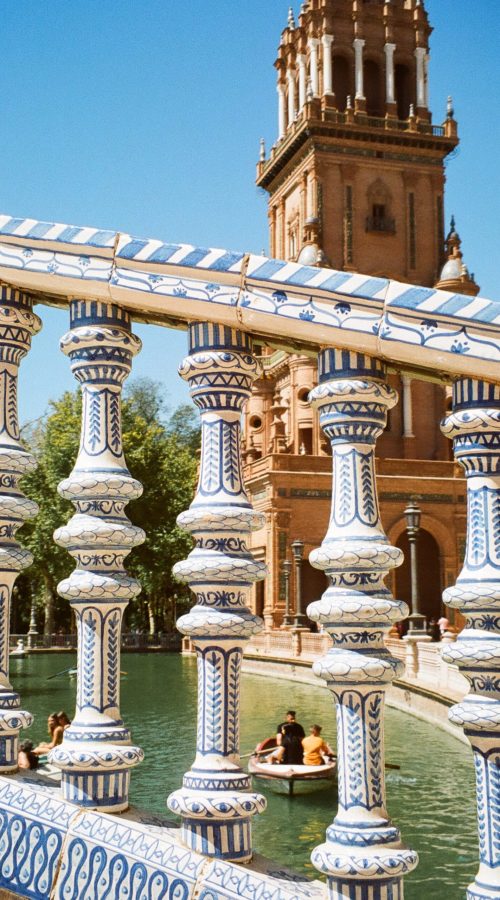
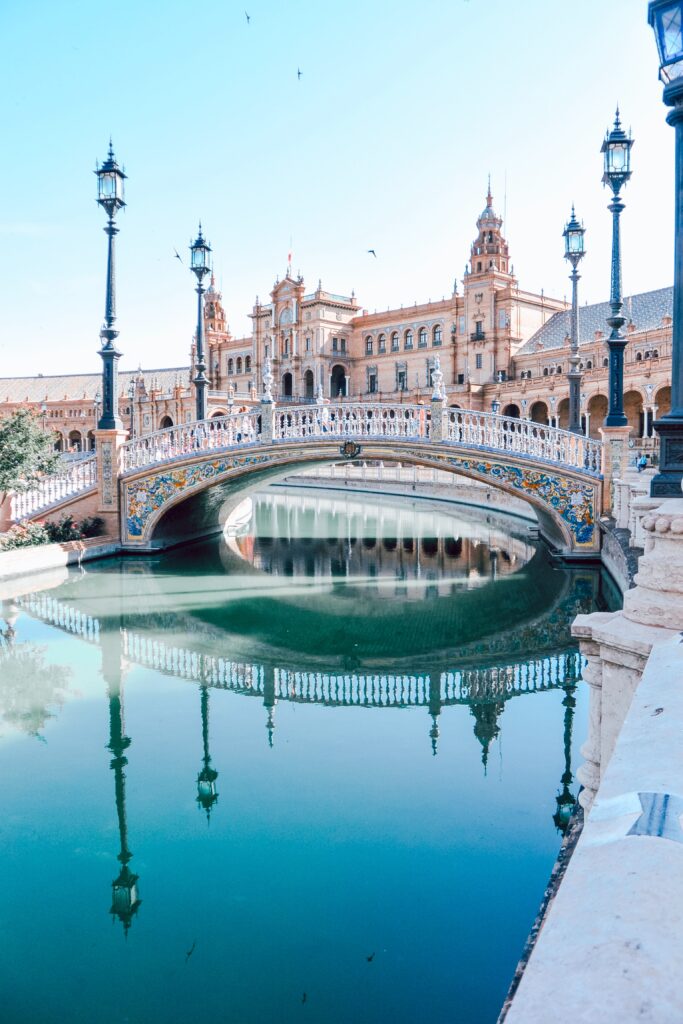
5. Plaza de España
A spectacular square designed by the Spanish architect Anibal Gonzalez. It was built in 1928 for the Ibero-American Exposition to showcase the ties between Spain and its former colonies.
One of the most striking features of Plaza de España is its semi-circular shape, which surrounds a large central square with a grand canal flowing through it. The plaza is adorned with beautiful brick and tilework, colorful ceramics, and intricate carvings, reflecting the traditional Andalusian and Mudéjar architectural styles. The use of azulejos, a form of glazed ceramic tiles, is exceptionally prominent, adding to the plaza’s stunning aesthetic.
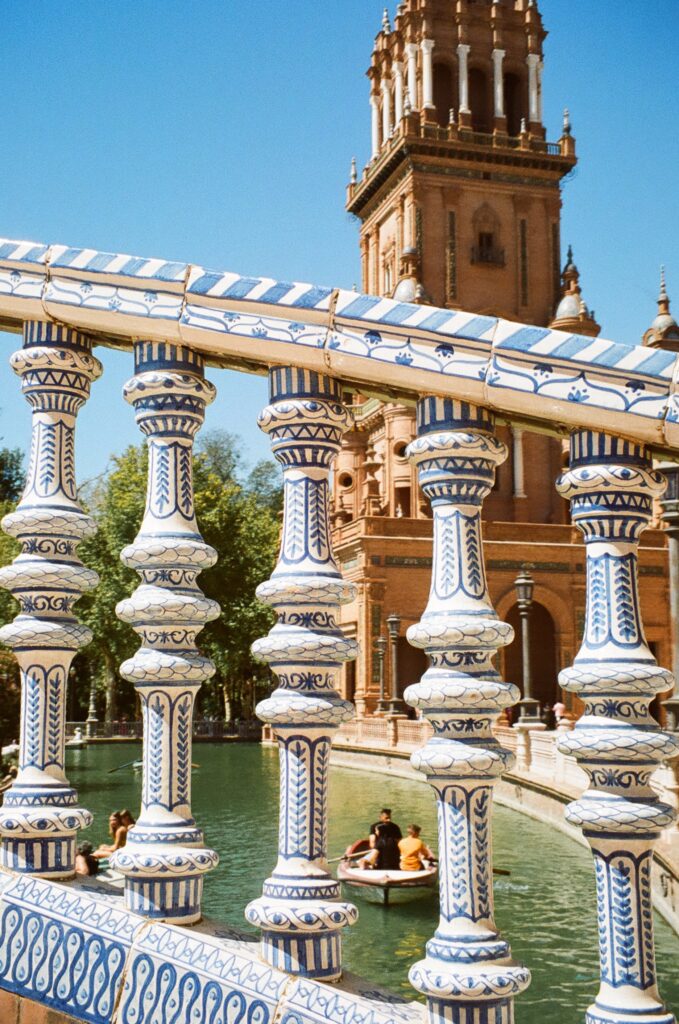
The main building of Plaza de España is a two-story structure that wraps around the semi-circular square, featuring a long colonnade with 48 alcoves representing each province of Spain. These nooks are adorned with ornate ceramic benches, each depicting a unique scene from the history or culture of the corresponding province. The second floor of the building is accessible via a grand staircase and offers panoramic views of the plaza and the surrounding area.
The central square of Plaza de España is a vast open space with a grand canal that is spanned by four ornate bridges. Visitors can rent rowboats to navigate the canal and enjoy the views of the plaza and the buildings surrounding it. The plaza also has numerous fountains, flower beds, and walkways, providing a serene and picturesque setting for strolls or relaxation.
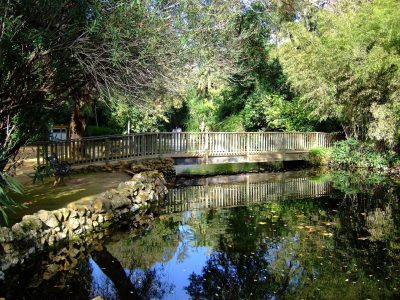
6. Parque de Maria Luisa
is an impressive park with 100 acres of area. Named after Maria Luisa Fernanda de Borbon, the Duchess of Montpesier.
Beautifully landscaped gardens, tree-lined paths, and fragrant flowers treat walkers with a mosaic of colors.
It houses the Plaza de Espana.
DAY 3
1. The Convento de Santa Paula, also known as the Monastery of Saint Paula
Was built in 1475 but converted to a convent in the 16th century. Beatriz de Silva, a noblewoman from Portugal who later became a saint, established the order of Immaculate Conception or the Conceptionist nuns who occupied the monastery.
The Convento de Santa Paula features stunning architectural elements that reflect the Renaissance and Baroque styles of the time. The main entrance of the convent is adorned with a beautiful portal that showcases intricate carvings and reliefs. The convent also has a serene cloister with a central patio that features a fountain and well-manicured gardens, creating a peaceful oasis in the bustling city.
2. Palacio de la Condesa de Lebrija, also known as Palacio de Lebrija
Known for its architecture, rich history, and remarkable collection of Roman mosaics.
It was built in the 16th century for the noblewoman Countess of Lebrija.
The palace has been renovated several times, resulting in various styles, Mudejar and Renaissance.
The castle is known for its impressive collection of Roman mosaics, which are considered one of the finest in the world. The mosaics were discovered in the early 20th century by the Countess of Lebrija during a trip to Italy, and she brought them back to Seville to adorn her palace. The mosaics depict a wide range of subjects, including mythological scenes, daily life, and intricate geometric patterns, showcasing the artistry and craftsmanship of the ancient Roman era.
In addition to the stunning mosaics, Palacio de Lebrija boasts a remarkable collection of art and antiquities. The palace’s rooms are adorned with exquisite furniture, tapestries, ceramics, and other decorative objects, showcasing the wealth and cultural richness of the Countess of Lebrija’s collection. The palace also features beautiful gardens, courtyards, and patios, providing a serene oasis in the heart of Seville’s bustling city center.
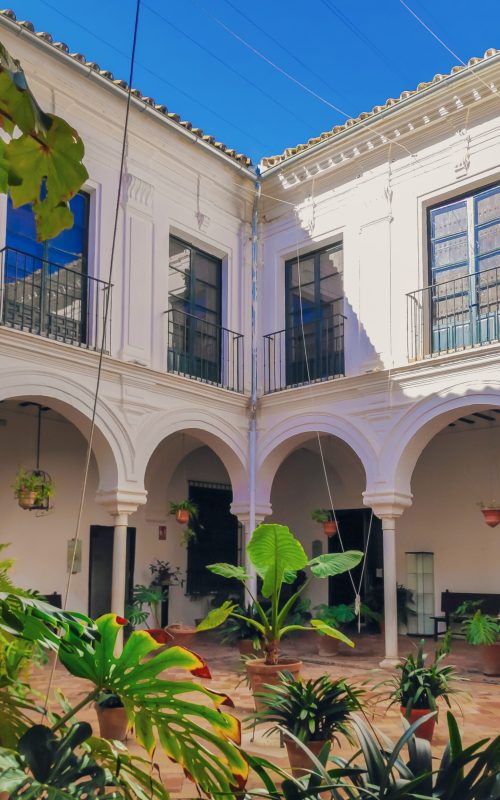
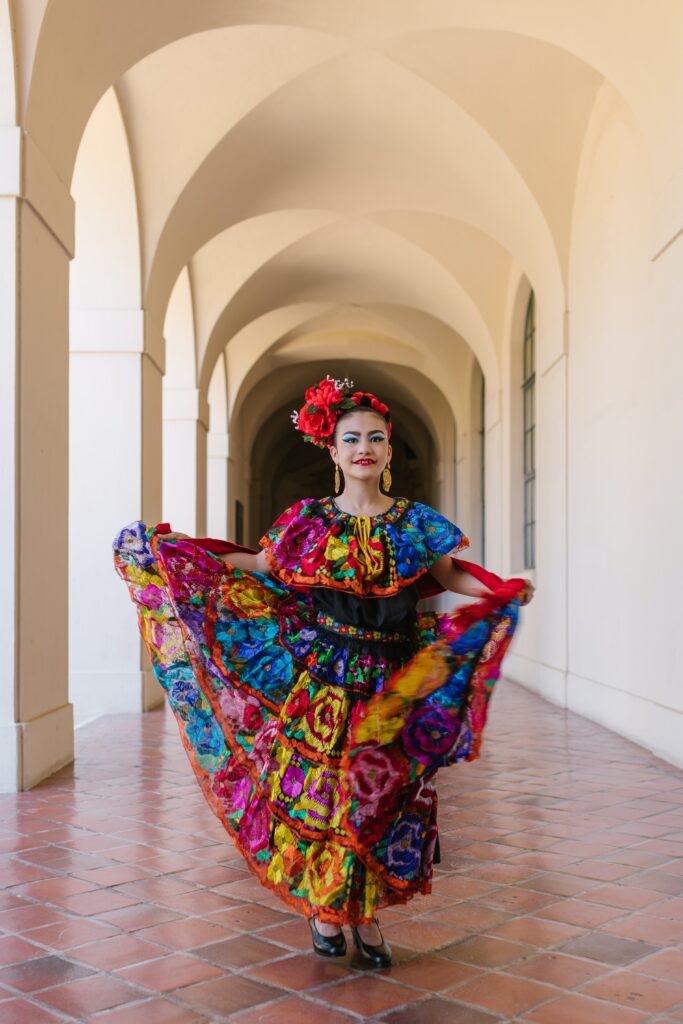
3. The Museo del Baile Flamenco
It is a museum dedicated to the art and culture of flamenco, one of Spain’s most iconic and passionate dance forms. The museum opened in 2006 and celebrated flamenco’s rich history, traditions, and significance in Spanish culture.
The museum is housed in a beautifully restored 18th-century building in the historic neighborhood of Triana, known for its flamenco heritage. As visitors step inside, they are transported into the mesmerizing world of flamenco, with its rhythmic beats, heartfelt melodies, and intense emotions. The museum’s exhibits are carefully curated to provide a comprehensive overview of flamenco, encompassing its origins, influences, and evolution over time.
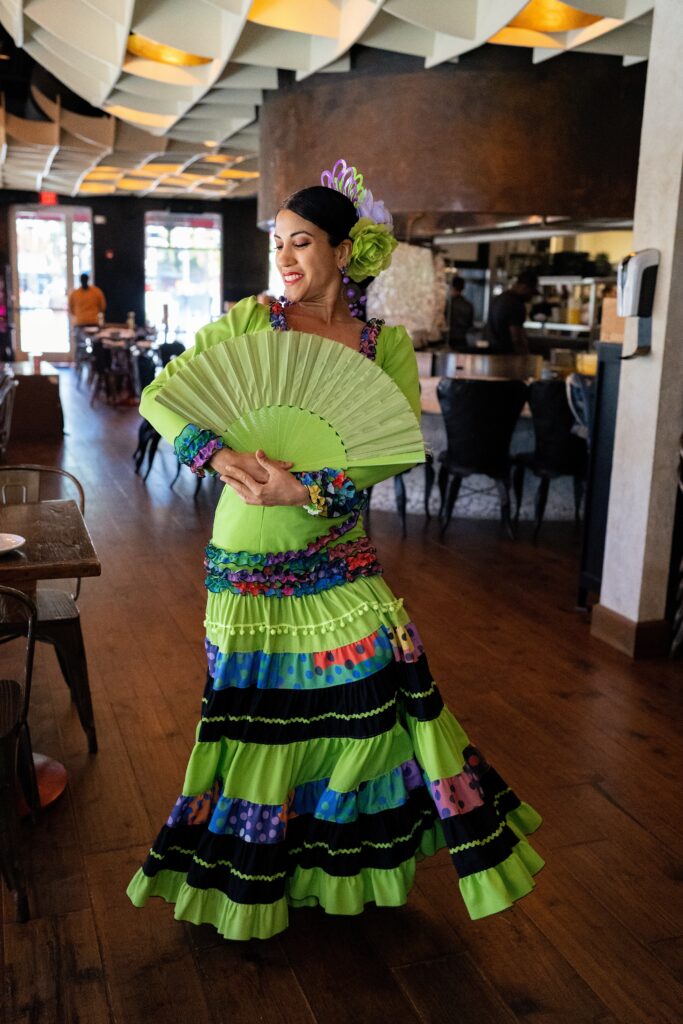
One of the highlights of the Museo del Baile Flamenco is its immersive multimedia exhibit that uses cutting-edge technology to bring flamenco to life. The museum also hosts regular live performances by professional flamenco dancers and musicians, allowing visitors to witness the art form in action and feel the raw emotions that flamenco evokes.
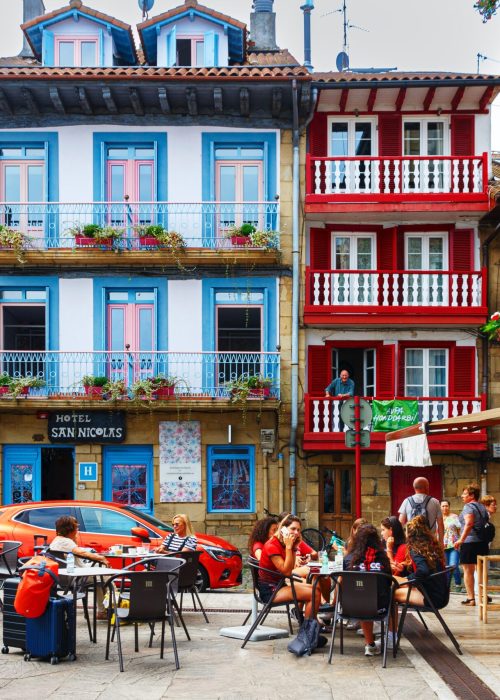
4. Barrio de Triana
Situated on the west bank of the Guadalquivir River is a vibrant and historic neighborhood lively atmosphere and distinctive architecture. Triana is often called the “soul of Seville” and is a popular destination for tourists and locals alike.
Triana has a long and colorful history that dates back to Roman times when it was known as “La Isla” due to being an island surrounded by the river. Over the centuries, Triana has been home to a diverse mix of cultures, including Romans, Visigoths, Moors, and Jews, contributing to its unique character and cultural richness.
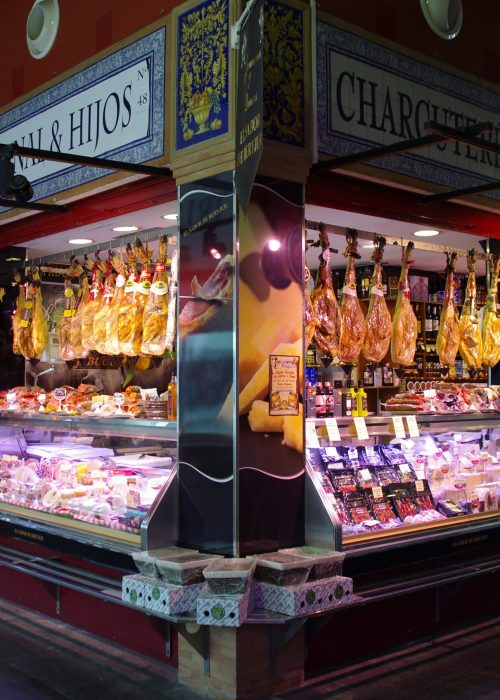
One of the most iconic features of Triana is its traditional ceramic tile industry, which has been thriving in the area since the 13th century. Triana’s colorful ceramic tiles, known as “azulejos,” adorn many of the buildings in the neighborhood, adding to its charm and beauty. The Triana Bridge, also known as the Isabel II Bridge, is an iconic symbol of the community. Its distinctive ironwork and decorative ceramic tiles make it a popular spot for visitors to take in panoramic views of Seville and the river.
Triana is also known for its vibrant flamenco scene, deeply rooted in the neighborhood’s history and culture.
The streets of Triana are narrow and winding, with traditional Andalusian houses painted in bright colors and adorned with flower-filled balconies. The neighborhood is known for its vibrant street life, with numerous tapas, bars, cafes, and shops lining its streets. Calle Betis, a famous street along the riverfront, is a hub of activity, especially during the evenings when locals and visitors gather to enjoy the nightlife and take in the picturesque views of the river and Seville’s historic city center.
Disclosure: Please note that some links on this website are affliate links. At no cost to you, I receive commission if you make a purchase. I only recommend companies that I research and would use.
